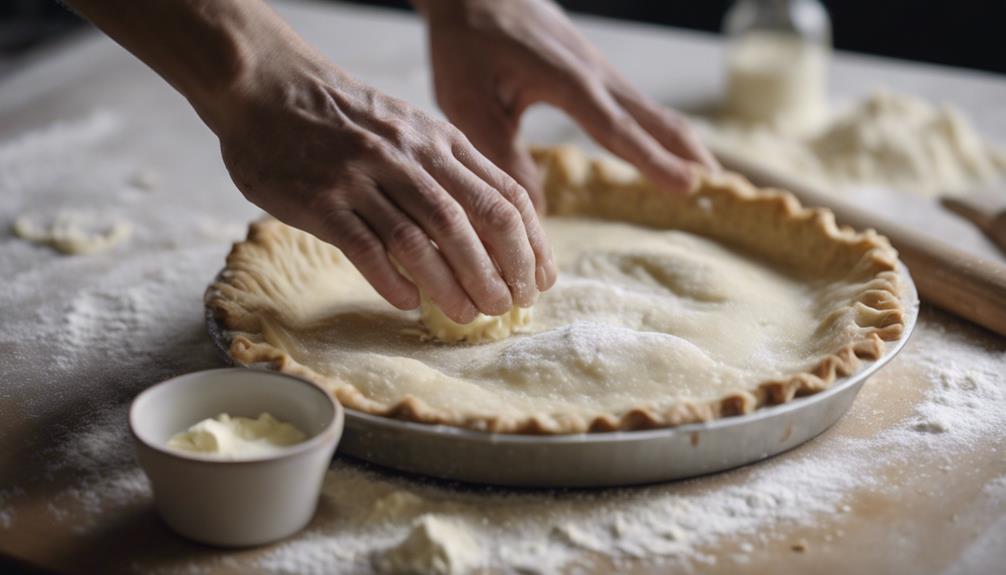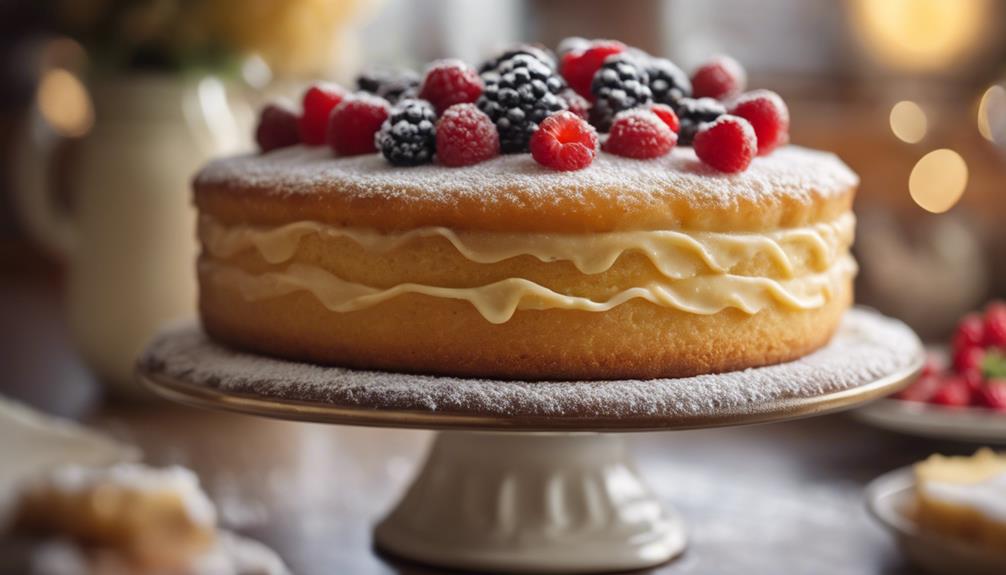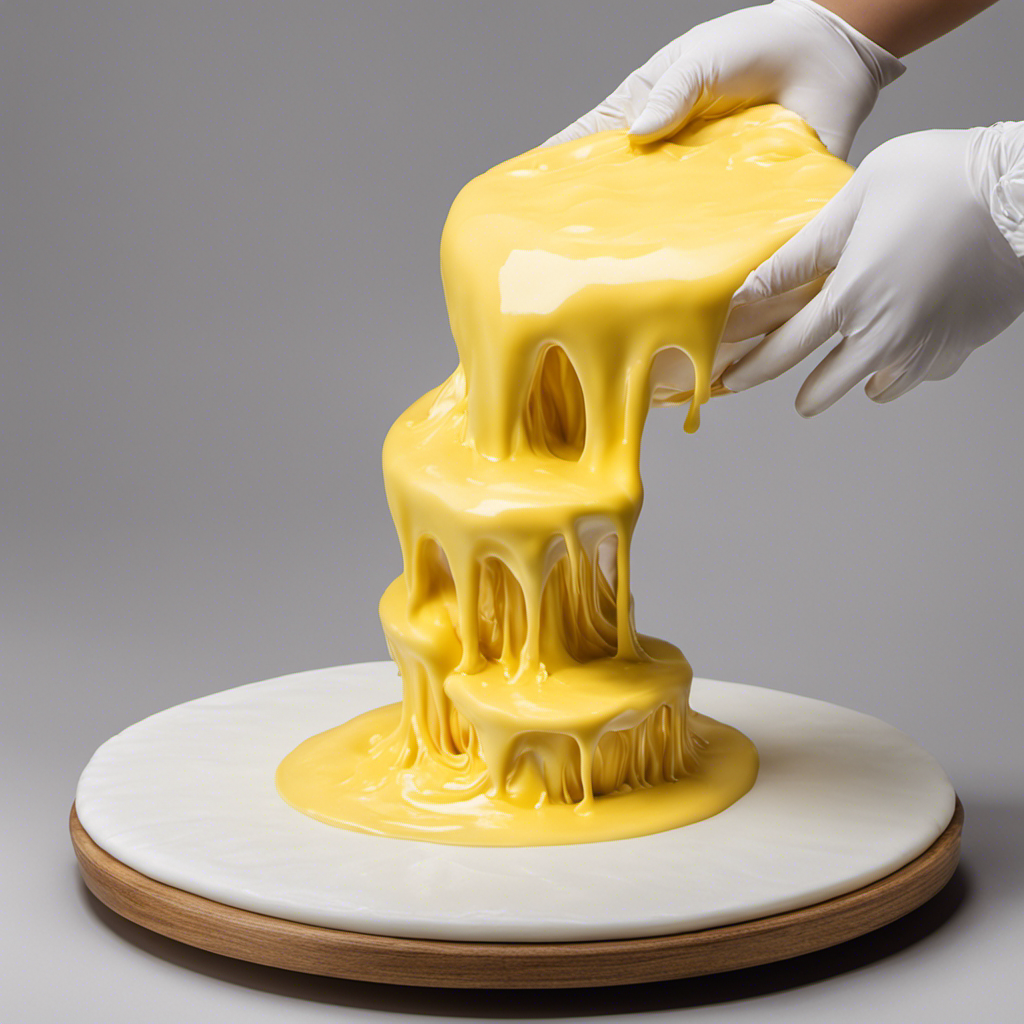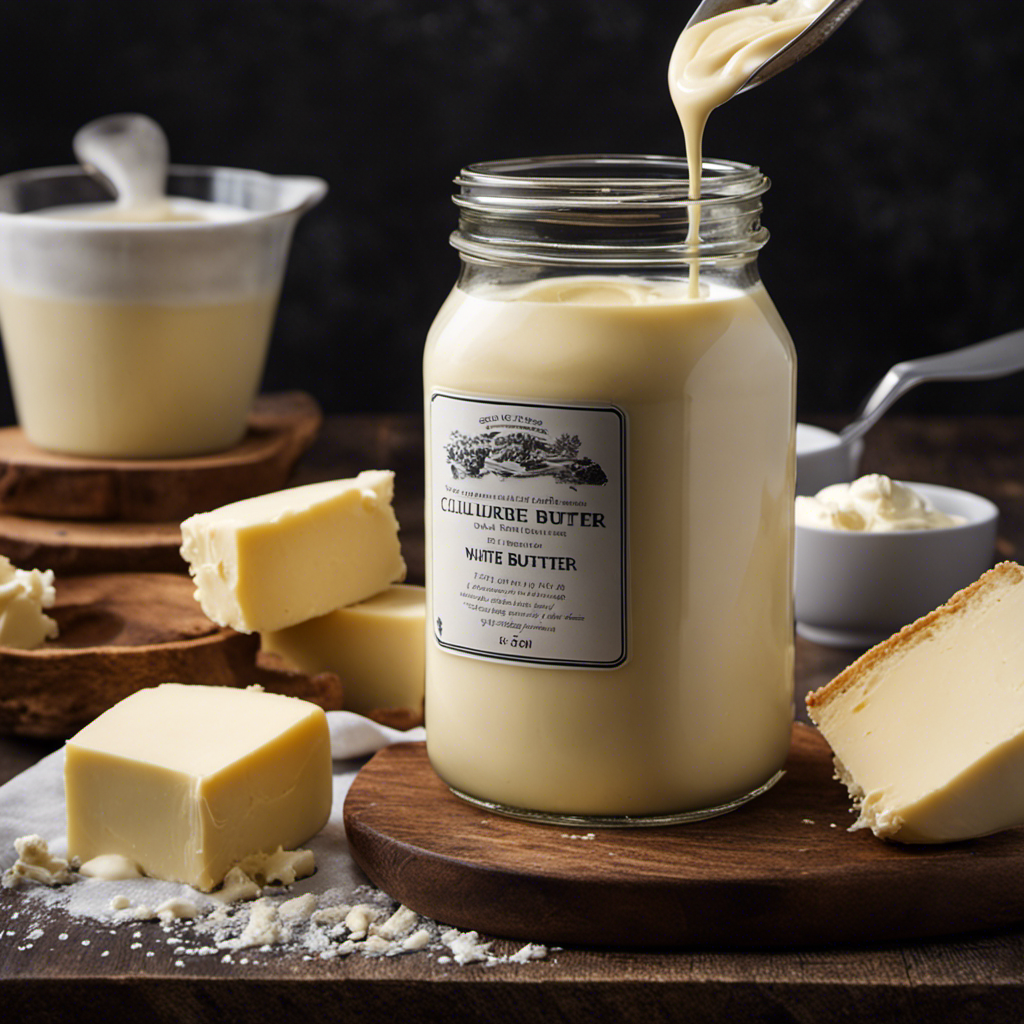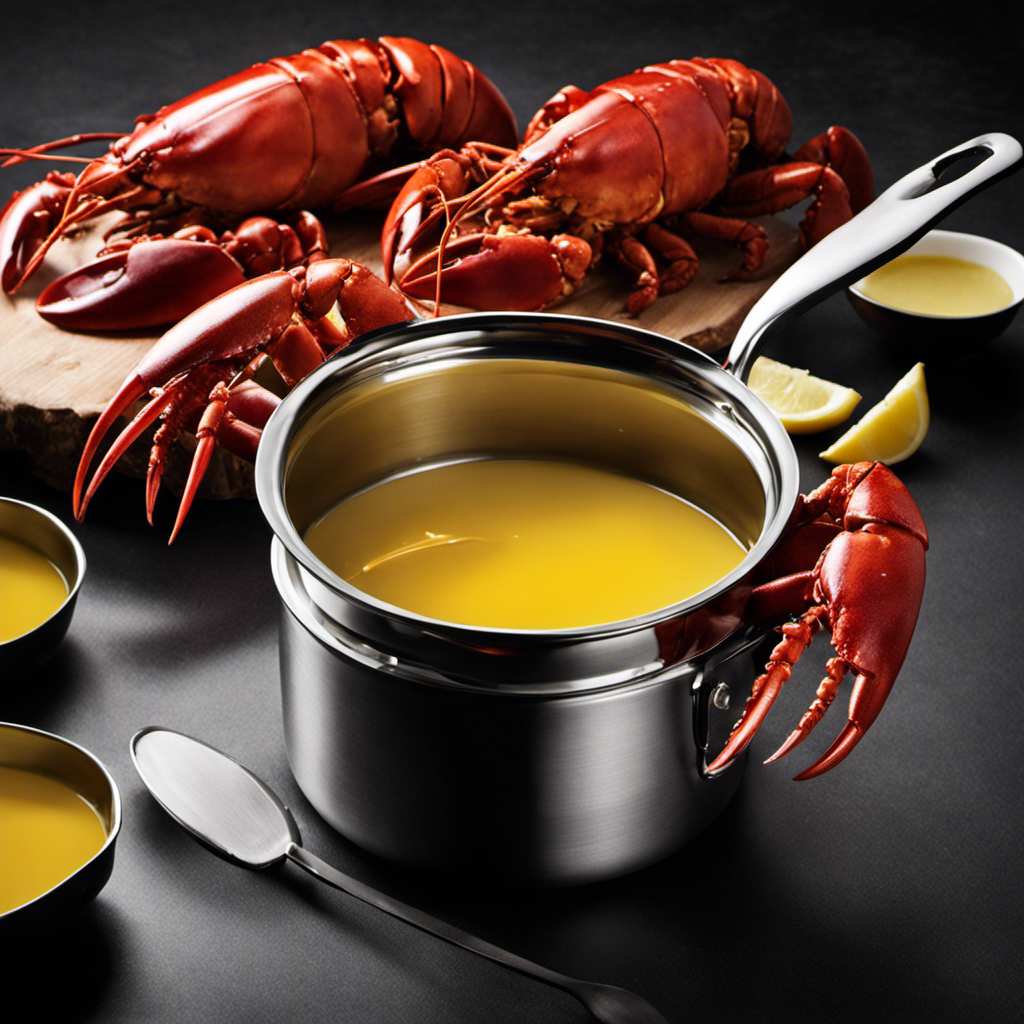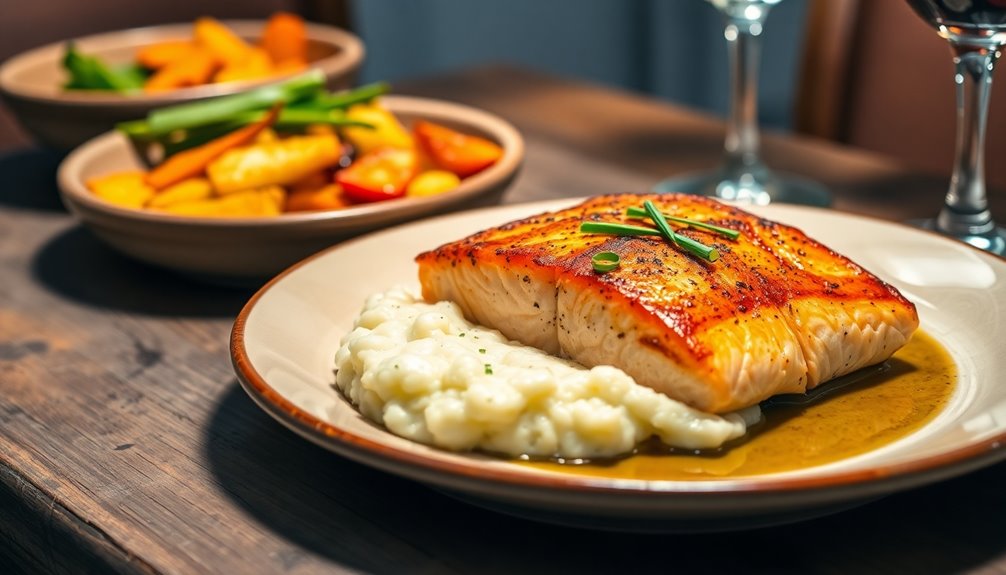Create the flakiest, buttery pie crust by blending cold butter, flour, salt, sugar, and icy water. Coat flour evenly with butter, avoid overmixing, and roll out thinly. Handle gently for flakiness and use a food processor or cutter for quick results. Try it with fruit pies, custard pies, or free-form tarts for a rustic touch. Master blind baking, sealing crusts, and making decorative edges. Experiment with fillings to enjoy the versatile crust. Learn the secrets to perfection with these key steps.
Key Takeaways
- Use very cold butter for flakiness.
- Incorporate a pinch of salt for taste balance.
- Add icy cold water gradually for binding.
- Combine ingredients gently for a perfect balance.
- Handle dough with care for ultimate flakiness.
Key Ingredients for Flaky Pie Crust
For a flaky pie crust, making sure you use very cold butter is essential. The cold butter, when mixed with all-purpose flour, creates small pockets of fat that melt during baking, resulting in a light and flaky texture.
Adding a pinch of salt not only enhances the overall taste of the crust but also helps balance the sweetness in pies.
To bind the ingredients together, icy cold water is necessary. This cold water ensures that the dough holds its shape and doesn't become too sticky.
For sweet pies, a touch of sugar can be added to the crust to complement the flavors of the filling. By combining these key ingredients – butter, flour, salt, sugar, and cold water – you can achieve a perfect balance of flakiness, flavor, and texture in your pie crust.
Secrets to Perfect Pie Crust
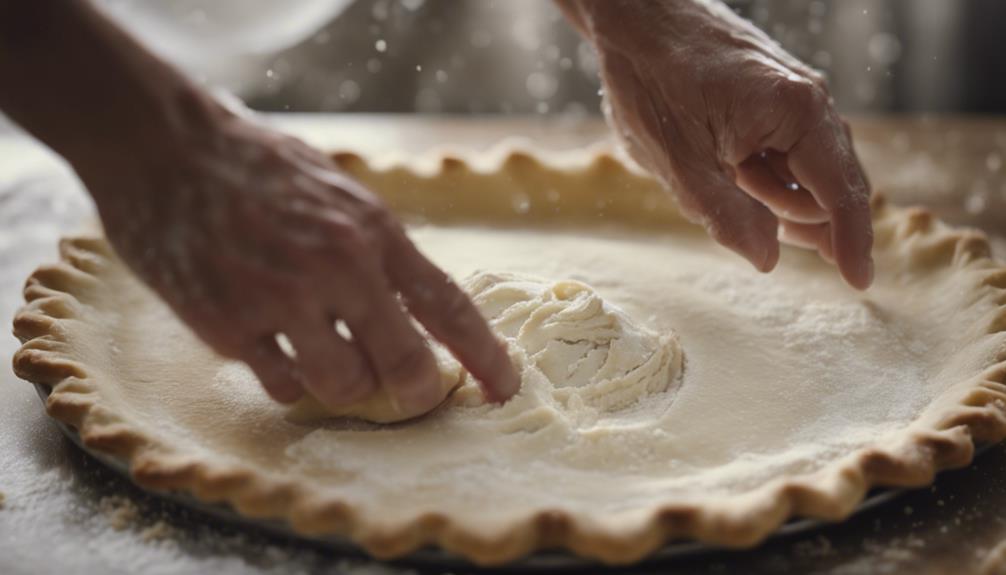
To achieve a perfect pie crust, mastering a few key secrets is essential. Here are some tips to help you create the ultimate flaky and tender pie crust using the Butter Pie Crust recipe:
- Coat the Flour with Cold Butter: Make sure the butter is cold and coat it evenly with flour to create layers in the dough, resulting in a flaky texture.
- Prevent Excessive Gluten Formation: Avoid overmixing the dough to prevent too much gluten formation, which can make the crust tough. Aim for a tender and light crust.
- Roll the Dough Thinly: Roll out the dough into long, thin layers to create a light and airy crust with delicate edges.
- Handle the Dough with Care: Treat the dough gently to keep the butter pieces intact, which will contribute to the flakiness of the final crust.
Pie Crust Making Methods
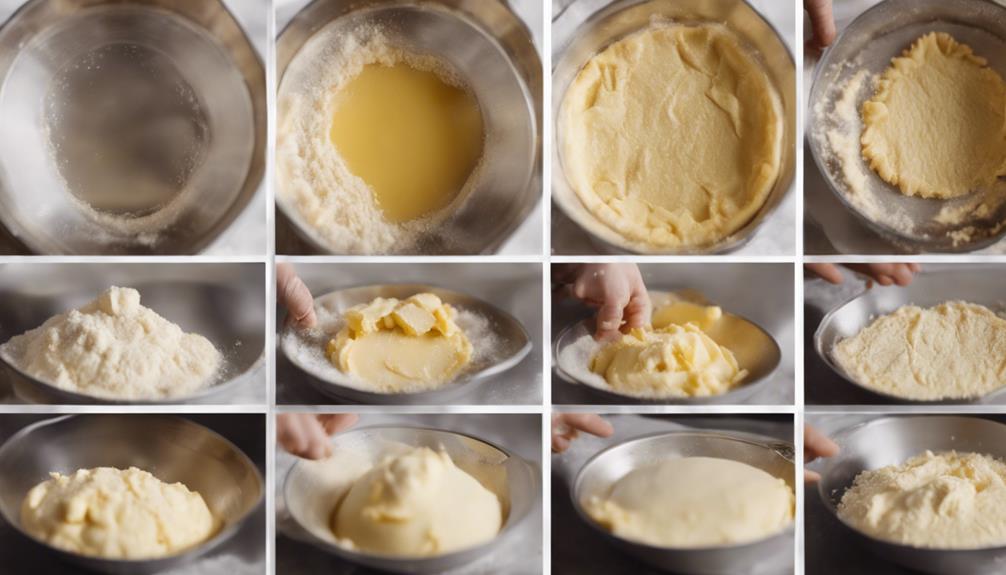
Consider using a food processor or a hand method with a pastry cutter when making your pie crust for quick and effective results.
In the food processor method, pulse cold butter with the flour mixture until it resembles coarse crumbs. Then, gradually add ice cold water until the dough forms.
Alternatively, with the hand method, use a pastry cutter to blend the cold butter into the flour until pea-sized crumbs are achieved. Slowly add ice cold water to bring the dough together without overworking it.
Both techniques yield flaky pie crusts ideal for any homemade pie crust recipe. Whether you choose to Blind Bake the crust or flute the edges for a decorative touch, mastering these pie crust making methods will set the foundation for a perfect pie every time.
Pie Crust Applications and Recipes
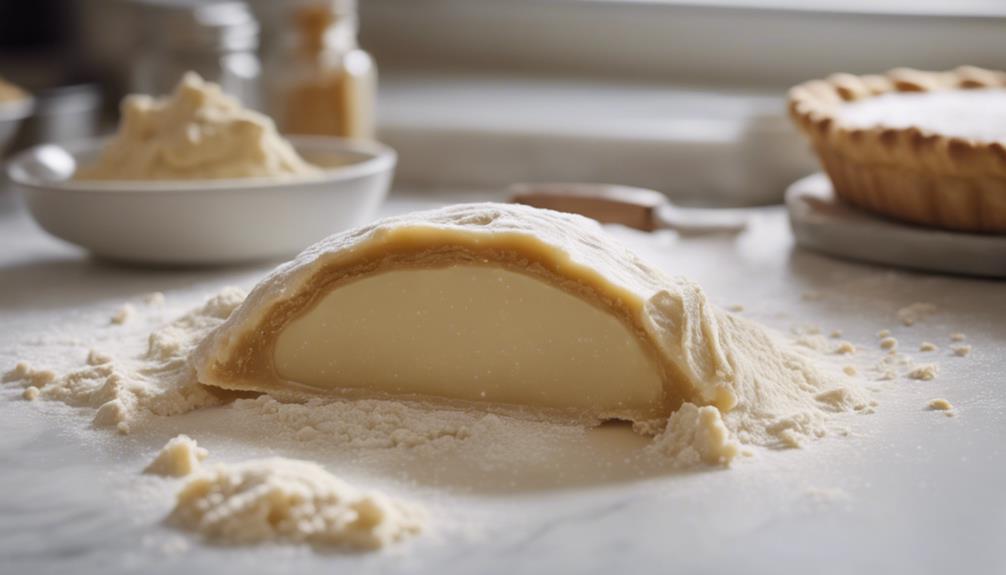
Mastering the butter pie crust recipe opens up a world of possibilities for creating delectable pies to suit various tastes and occasions. The flaky butter pie crust is a versatile base that can be tailored to different pie fillings, making it a must-have for any baking enthusiast.
Here are some pie crust applications and recipes to inspire your next baking adventure:
- Fruit Pies: The butter pie crust pairs beautifully with fruit fillings like blueberry and apple, enhancing the natural sweetness of the fruits with its flaky texture.
- Custard Pies: For creamy and decadent pies such as pumpkin and sweet potato, the butter pie crust provides a delicate and buttery contrast to the rich custard fillings.
- Free-Form Pies: Try using the butter pie crust for free-form pies like apple tart, where the flaky layers add a rustic charm to the dessert.
- Fresh Strawberry Pie: Showcase the butter pie crust's flakiness with a fresh strawberry pie, highlighting how well it complements sweet and juicy fruit fillings.
Whether you're sticking to classics like apple pie or experimenting with new flavors, the butter pie crust recipe guarantees a delicious foundation for your favorite pies.
Pie Crust Baking Techniques
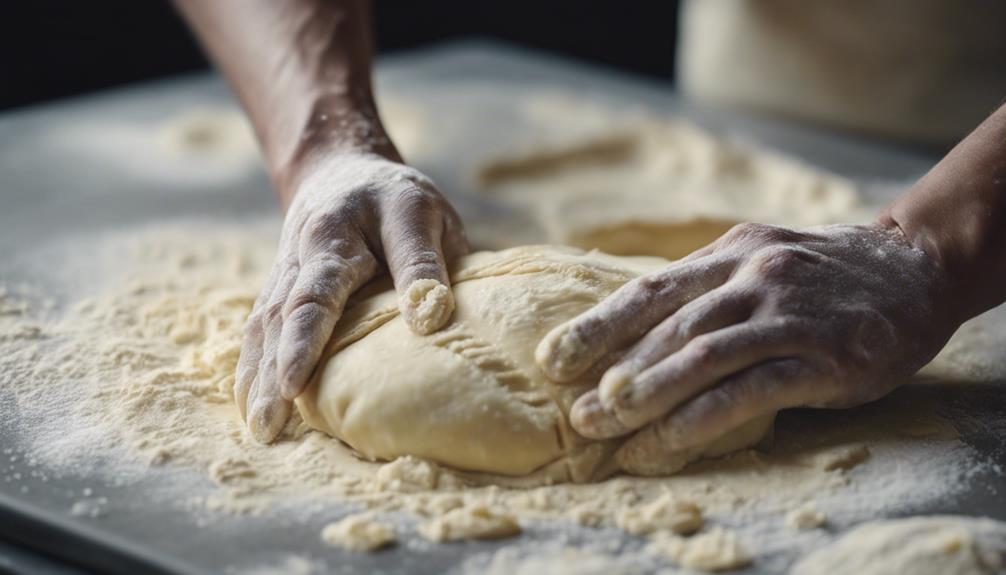
You can improve your pie baking skills by mastering various pie crust baking techniques. For the best pie crust recipe, consider blind baking the crust when making a single-crust pie to secure a crisp bottom.
When making a double-crust pie, remember to seal the top and bottom crusts together and create vents to allow steam to escape during baking.
Detailed directions for preparing the pie crust include chilling the dough, rolling it out to an even thickness, and fluting the edges for a decorative finish. The recipe is praised for being easy to roll out, making it a favorite among bakers.
To optimize results, freeze the dough for up to 3 months and thaw it in the refrigerator before use.
These techniques, from sealing the crust to creating vents, will help you achieve a flaky, delicious pie crust that complements a variety of fillings.
Ingredients for Homemade Pie Crust
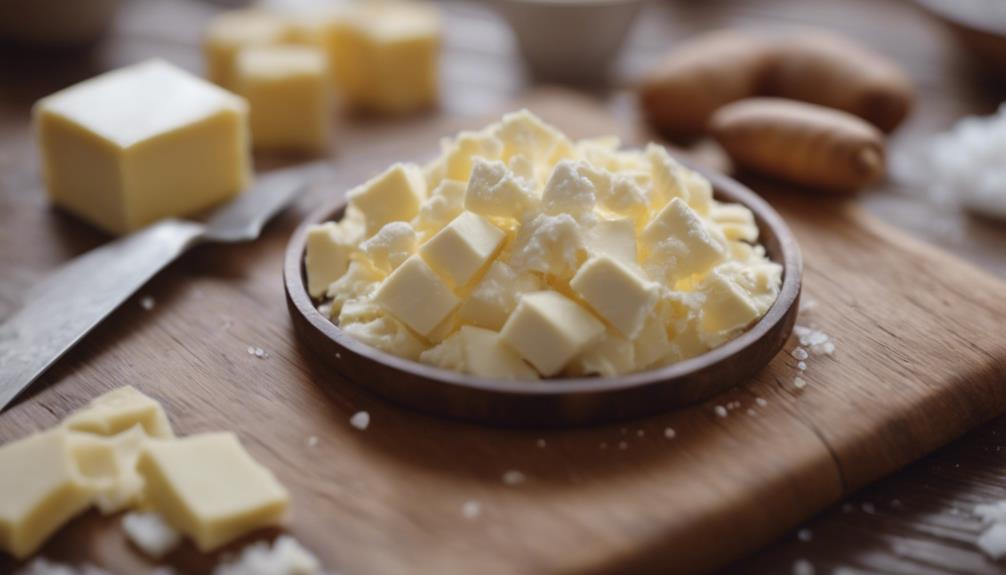
You need cold, unsalted butter, all-purpose flour, salt, sugar, and ice water for a homemade pie crust.
These ingredients work together to create a flaky and tender crust that complements your pie fillings perfectly.
Make sure to handle and measure them properly for the best results.
Essential Crust Ingredients
To make a homemade pie crust, gather all-purpose flour, salt, cold unsalted butter, and ice cold water as the essential ingredients. These items are important for achieving the perfect balance of flavor and texture in your butter pie crust.
Here's why each ingredient plays a significant role:
- Butter: Adds richness and contributes to the flakiness of the crust.
- All-purpose flour: Provides structure and helps create a sturdy crust that holds the filling.
- Salt: Enhances the overall flavor profile of the crust, balancing the sweetness of the filling.
- Ice cold water: Maintains the temperature of the ingredients and helps prevent the butter from melting too quickly, resulting in a tender and flaky crust.
Combining these ingredients in the right proportions is key to producing a delicious, buttery pie crust that will elevate your baked goods to a whole new level.
Key Recipe Directions
Achieving a perfect homemade pie crust begins with carefully combining cold unsalted butter, all-purpose flour, salt, sugar, and icy cold water in the right proportions.
The cold butter is essential for achieving that flaky texture in your pie crust, so make sure it stays well chilled throughout the process.
Balancing the flavors with a touch of sugar and salt not only enhances the taste but also complements both sweet and savory fillings beautifully.
Following the recipe directions diligently and using top-quality ingredients are vital in attaining a buttery, crispy, and delicious pie crust every time you bake.
Remember, the key to pie crust perfection lies in the meticulous execution of these fundamental steps, from handling the cold butter with care to blending in the flour, sugar, salt, and water with precision.
Embrace the process, and you'll be rewarded with a delectable crust that elevates your pies to a whole new level of culinary delight.
Tips for Perfecting Pie Crust
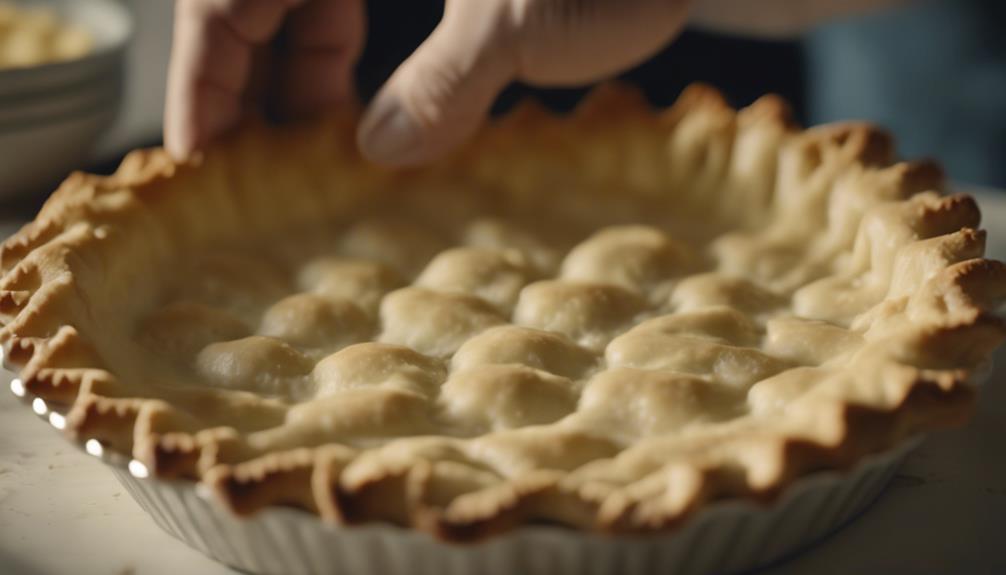
For perfecting your pie crust, remember to keep all ingredients chilled to achieve a flaky texture and prevent the butter from melting too quickly.
Here are some essential tips to help you achieve flaky perfection:
- Gradually add ice-cold water to the dough until it just holds together, being cautious not to overwork it for a tender crust.
- Rest the pie dough in the refrigerator before rolling it out to relax the gluten and make it easier to handle during shaping.
- Opt for a glass pie dish for even baking and consider pre-baking the crust with weights to prevent shrinkage and secure a crispy bottom.
- Experiment with variations such as incorporating apple cider vinegar for flavor enhancement or adjusting sugar levels based on the sweetness desired for your savory or sweet pie fillings.
Frequently Asked Questions
What Is the Secret to a Flaky Crust?
To achieve a flaky crust, keep butter cold for steam pockets and coat flour to prevent gluten formation. Form thin, long layers for a light texture. Follow techniques from Cooks Illustrated and Kenji López-Alt for the best results.
Is Pie Crust Better With Crisco or Butter?
For a flakier, more flavorful pie crust, butter reigns supreme over Crisco. Its rich taste and crispy texture make it the top choice among bakers. Opt for butter to achieve that perfect balance of flavor and flakiness.
Should You Butter Pie Crust Before Baking?
Yes, you should butter pie crust before baking. It creates a barrier against sogginess, adds flavor, promotes browning, and results in a shiny finish. Using melted butter enhances the taste, making each bite deliciously buttery.
What Is the Best Flour to Use in Flaky Pie Crust?
For flaky pie crust perfection, all-purpose flour reigns supreme, ensuring consistent results and versatility. Experimenting with different types like cake flour for tenderness or whole wheat for a nutty flavor can lead to unique textures and tastes.
Conclusion
So there you have it, the keys to achieving flaky perfection in your butter pie crust. Just remember, if your crust isn't flaky enough, your pie is basically a sad, crumbly mess.
So don't be afraid to get your hands dirty and embrace the buttery goodness. Your taste buds will thank you for it!
Happy baking, and may your pies be forever flaky.
